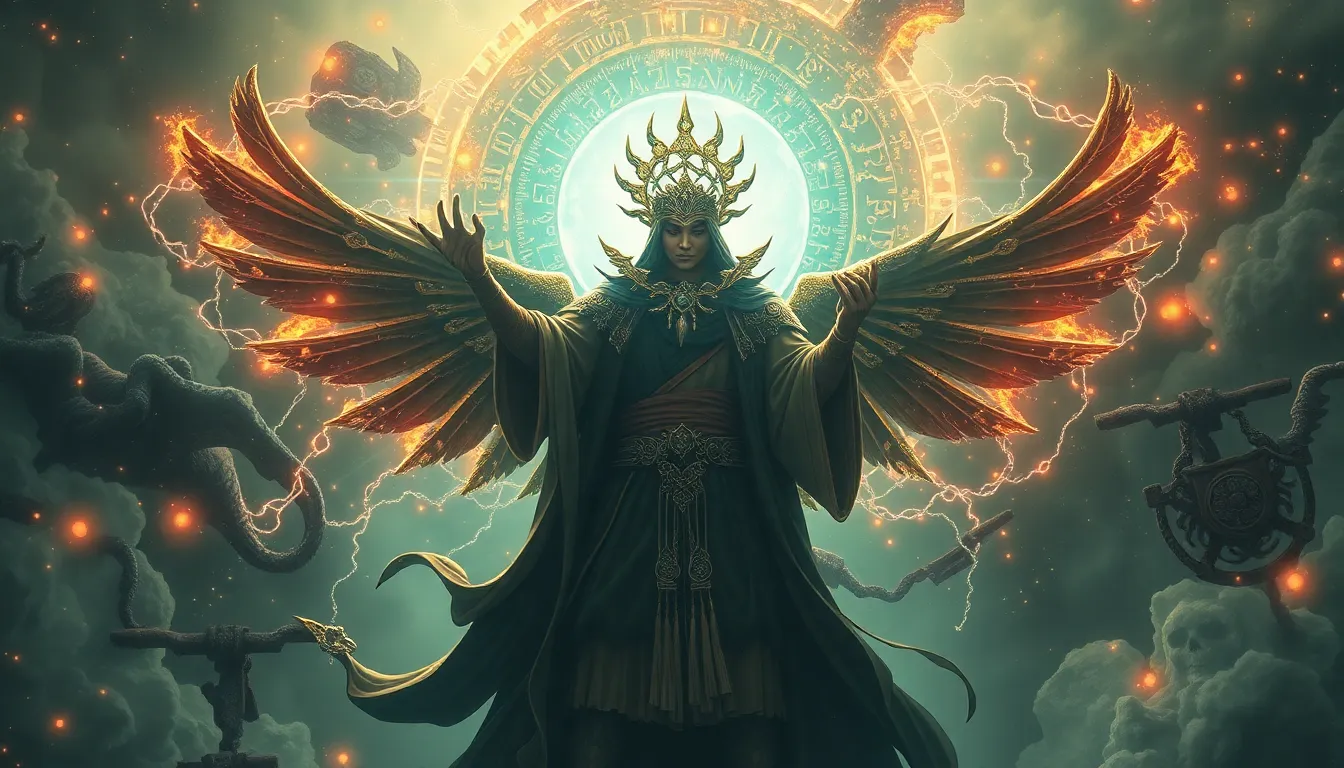The Dragon’s Shadow on Olympus: Níðhöggr and the Greek Gods
I. Introduction
Níðhöggr is a significant figure in Norse mythology, often depicted as a dragon or serpent that gnaws at the roots of Yggdrasil, the World Tree. This creature embodies the themes of decay and the cyclical nature of life, representing the inevitable end that leads to renewal.
The presence of dragons in mythological narratives is a common motif, signifying various aspects of chaos, guardianship, and transformation. This article aims to explore the intriguing connections between Níðhöggr and the pantheon of Greek gods, examining how these two mythological traditions intersect and reflect similar themes.
II. Níðhöggr: The Dragon of the Underworld
Níðhöggr is more than just a dragon; it is a potent symbol within Norse mythology. Its description is often that of a fearsome beast, residing in the depths of Hel, the underworld. Níðhöggr is characterized by:
- Its relentless gnawing at the roots of Yggdrasil, signifying destruction.
- Its association with the souls of the dead, as it feeds on the corpses found in Hel.
- The duality of its nature, representing both decay and the potential for rebirth.
In the context of Yggdrasil, Níðhöggr plays a crucial role in the balance of life and death. The World Tree connects the nine realms of Norse cosmology, and Níðhöggr’s actions illustrate the cycle of destruction that allows for new growth. This symbolism of decay leading to renewal is a central theme in Norse beliefs, reflecting the harsh realities of existence.
III. The Greek Pantheon: An Overview
The Greek pantheon consists of a vast array of gods and goddesses, each representing different aspects of life, nature, and human experience. Key figures include:
- Zeus: The king of the gods and god of the sky.
- Hades: The god of the underworld.
- Poseidon: The god of the sea.
- Hera: The queen of the gods and goddess of marriage.
Major themes in Greek mythology include creation, power struggles among gods, and the chaos that often ensues from divine conflicts. The mythology of Greece is rich with narratives that explore the human condition, morality, and the natural world.
When comparing Greek and Norse mythologies, one can note structural similarities, including the presence of a cosmic tree, a hierarchy of gods, and mythological creatures that symbolize chaos and order.
IV. Thematic Parallels: Dragons and Serpents in Mythology
Dragons and serpents hold significant roles in both Norse and Greek mythologies, often embodying chaos, guardianship, or transformation. This section explores these connections:
- Níðhöggr and Ladon: Níðhöggr parallels the Greek dragon Ladon, who guarded the golden apples in the Garden of the Hesperides. Both creatures serve as protectors of significant treasures and represent the chaotic forces that must be overcome.
- Symbolism: In both mythologies, dragons often symbolize chaos that must be confronted or tamed. They can also embody transformation, as heroes often undergo significant change after encounters with such beings.
The similarities between Níðhöggr and Ladon highlight the universal themes present in mythologies worldwide, where dragons are both feared and revered, serving as potent symbols of the struggles inherent in existence.
V. Níðhöggr’s Influence on Greek Myths
An exploration of potential interactions between Norse and Greek mythologies reveals rich comparative insights. While there is no direct evidence of crossover between the two, thematic similarities abound:
- Underworld Figures: Níðhöggr can be compared to figures like Typhon and Cerberus in Greek mythology. Typhon, the monstrous offspring of Gaia and Tartarus, represents chaos and destruction, while Cerberus guards the gates of the underworld, similar to how Níðhöggr embodies the cycle of death.
- Dragons as Agents of Punishment: Both Níðhöggr and figures like Typhon are associated with punishment and chaos. In Greek mythology, Typhon’s battles against Zeus symbolize the struggle against chaos and disorder.
These comparisons illustrate how dragons serve as archetypal figures across cultures, representing the fears and challenges faced by humanity.
VI. The Legacy of Níðhöggr in Modern Culture
Níðhöggr’s legacy extends beyond ancient texts into modern literature, art, and popular media. Its representation has evolved, reflecting contemporary interpretations of mythology:
- Literature: Níðhöggr appears in various fantasy novels, often depicted as a powerful creature symbolizing the struggle between good and evil.
- Art: Artists have drawn inspiration from Níðhöggr, illustrating its fearsome presence and the themes of decay and renewal.
- Popular Media: Video games and films frequently incorporate dragon motifs, with Níðhöggr influencing the portrayal of dragons as complex beings.
This blending of mythological traditions demonstrates how ancient narratives continue to shape modern storytelling, reflecting ongoing human fascination with dragons and the themes they embody.
VII. Conclusion
Níðhöggr’s significance in Norse mythology and its connections to Greek mythology highlight the enduring power of these ancient stories. The thematic parallels between dragons in both traditions reveal a shared understanding of chaos, transformation, and the human experience.
As myths evolve, they continue to resonate with contemporary audiences, illustrating the timeless nature of these narratives. The coexistence of mythological creatures across cultures enriches our understanding of humanity’s collective imagination and the stories we tell.
VIII. Further Reading and Resources
For those interested in exploring Norse and Greek mythology further, the following resources are recommended:
- Books:
- The Prose Edda by Snorri Sturluson
- Mythology: Timeless Tales of Gods and Heroes by Edith Hamilton
- Online Resources:
- Mythopedia – A comprehensive mythology database.
- Theoi Greek Mythology – An extensive resource on Greek myths and characters.
- Documentaries:
- Mythical Beasts – A series exploring various mythological creatures.
- Secrets of the Vikings – A documentary focusing on Norse mythology and culture.




